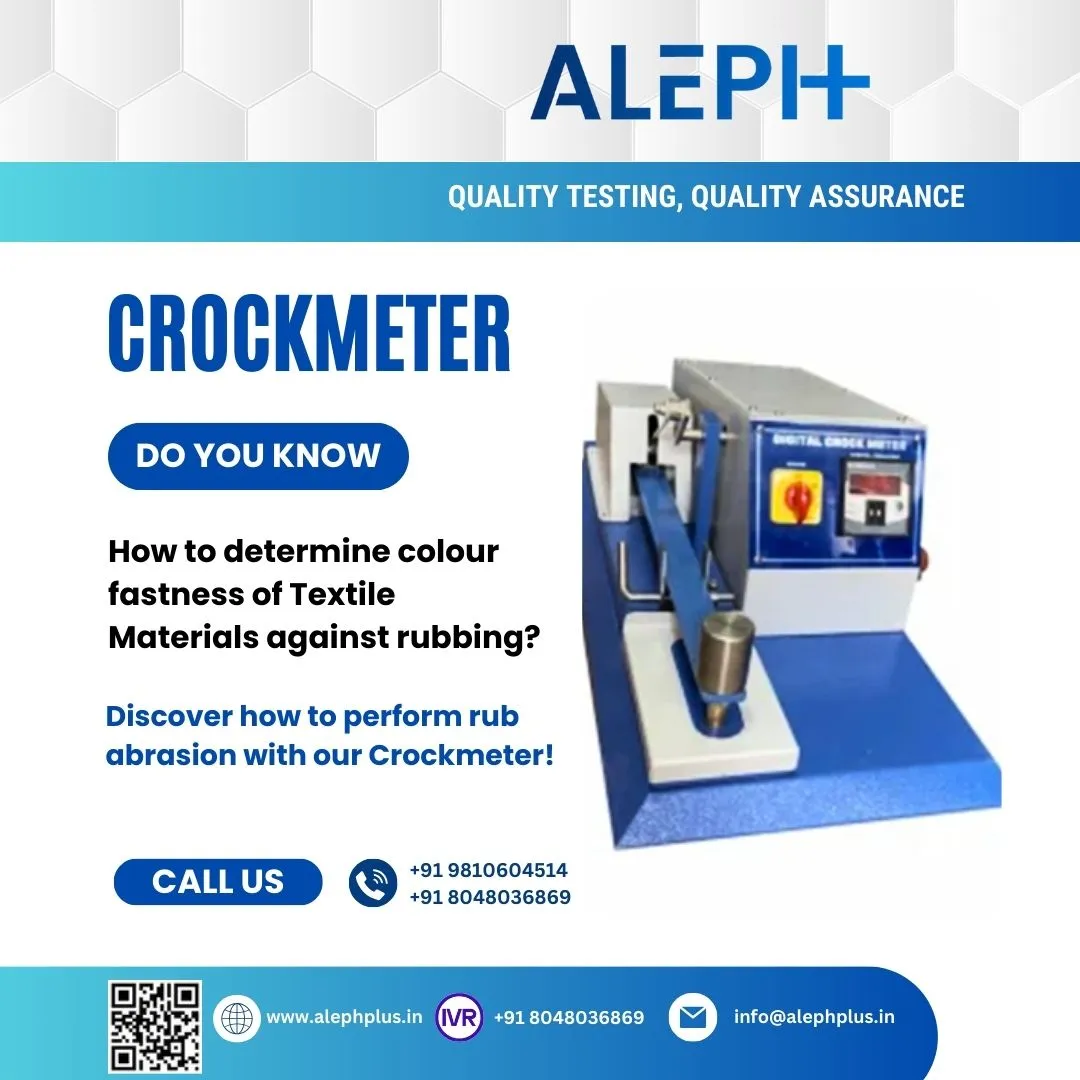
Crockmeter for Determining Colorfastness | Aleph+
In the vibrant world of textiles, ensuring color durability is a paramount concern for manufacturers and consumers alike. One indispensable tool in this realm is the Crockmeter, a device that plays a crucial role in determining colorfastness – the ability of a material to retain its color without fading or transferring.
Understanding Colorfastness: A Brief Overview
Colorfastness is a key quality parameter, especially in textiles like fabric, carpets, yarn, and leather. It gauges the material's resistance to color transfer during various conditions, such as rubbing, washing, or exposure to light. The Crockmeter, with its ingenious design, addresses this need by providing a rapid and precise method for assessing color transfer through rubbing.
How the Crockmeter Works
At its core, the Crockmeter consists of a rubbing finger that moves back and forth over the textile surface in contact with the specimen being tested. The rubbing motion simulates everyday wear and tear, helping evaluate how much color is susceptible to transfer.
The test involves rubbing a white fabric against the sample, and the extent of color transfer is assessed by comparing the stained fabric with a color scale. This simple yet effective procedure mimics real-world scenarios where textiles might come into contact with other surfaces, ensuring that products meet quality standards.
Applications of Crockmeters Across Industries
The versatility of the Crockmeter extends beyond the textile industry. It finds applications in quality control laboratories, manufacturing units, and research facilities. Assessing colorfastness is particularly critical in areas such as:
1. Apparel Industry: Ensuring that garments retain their vibrant colors, even after repeated wear and washing.
2. Automotive Sector: Verifying the color durability of textiles used in vehicle interiors to withstand friction and sunlight.
3. Furniture Manufacturing: Evaluating the resistance of upholstery fabrics to color transfer during use.
4. Footwear Production: Checking the colorfastness of materials used in shoes to maintain their aesthetic appeal.
Benefits of Crockmeter Testing
1. Quality Assurance: Manufacturers can ensure that their products meet stringent quality standards, building trust among consumers.
2. Consumer Satisfaction: Consumers receive products that retain their aesthetic appeal, even after prolonged use.
3. Compliance: Adherence to industry regulations and standards, especially crucial in sectors like textiles and fashion.
Conclusion
The unassuming Crockmeter plays a pivotal role in upholding the visual integrity of textiles across diverse industries. As manufacturers and consumers alike prioritize sustainable and durable products, the Crockmeter stands as a guardian of colorfastness, ensuring that the hues we love endure the test of time and wear.
